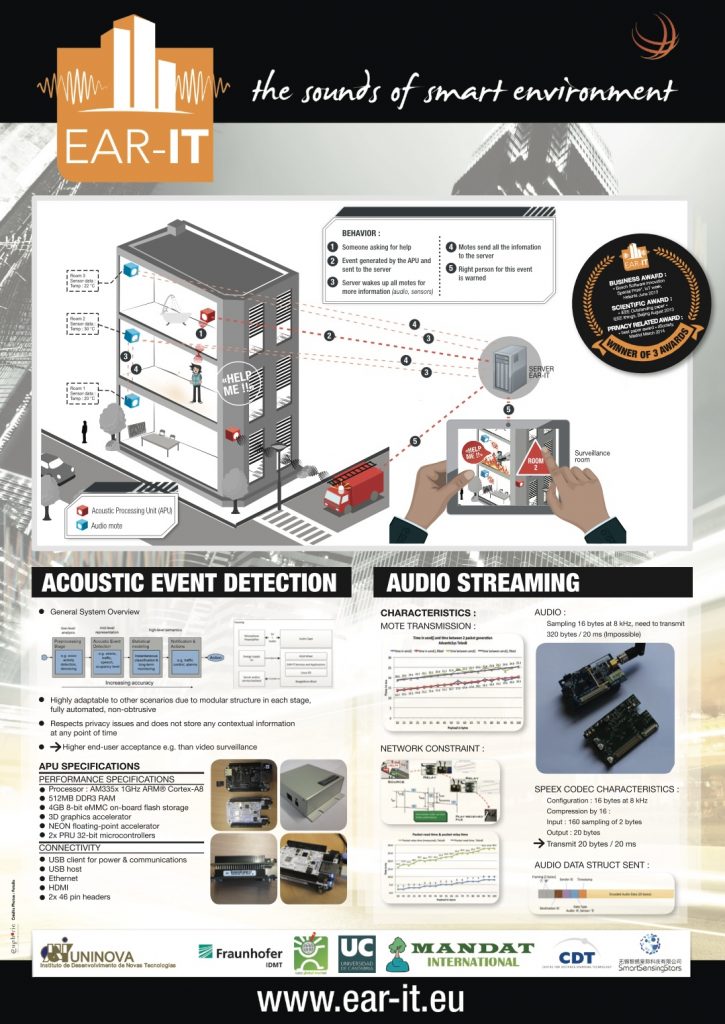2012-2014 FP7 EAR-IT. EAR-IT is an innovative project where the idea was simple: listening & streaming the sounds of smart environment! It was the time where we still wanted to have multi-hop relay transmission of challenging real-time trafic! Although WAZIUP started many of our activities in IoT, EAR-IT increased our technical expertise in microcontrollers, low power radio transmissions and embedded control software. Without EAR-IT, we probably would not have WAZIUP.
It was my very first step in ambitious and exciting European projects and I’m grateful to Philippe Cousin from EGM (at that time, now CEO of Senseen) for this so rewarding collaboration!
The general objectives of the EAR-IT project was to monitor sounds in urban environments in order to detect and process particular events. The following illustration describes the project’s main objectives.
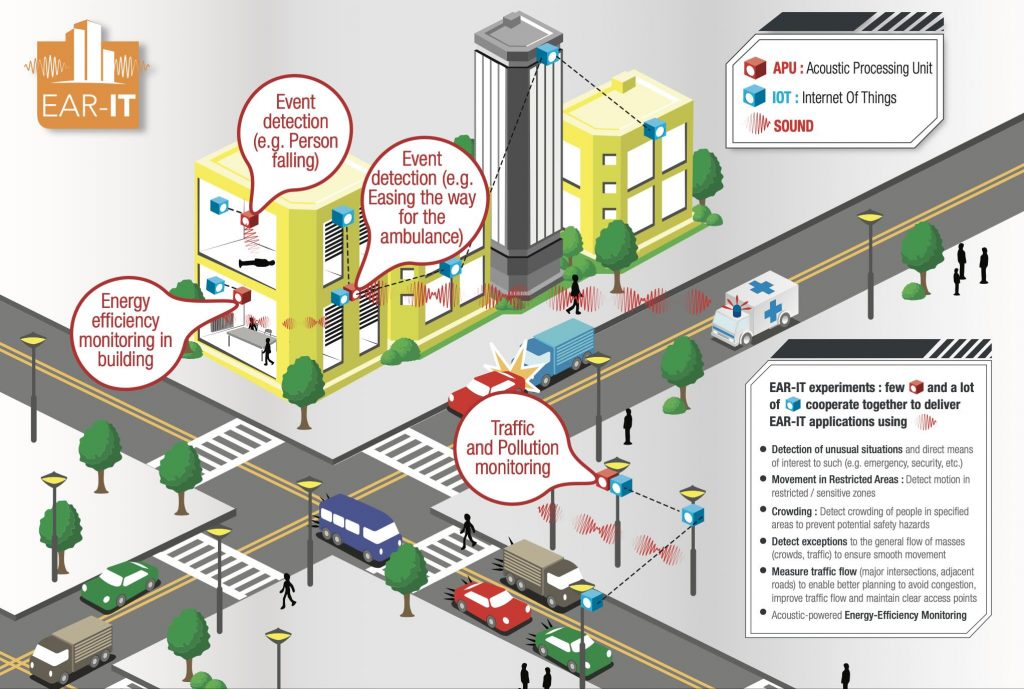
My contributions is EAR-IT was (i) to qualify the performance of the SmartSantander wireless sensor network (one of the first smart city initiatives!), which was mainly based on IEEE 802.15.4 low-power radios, to determine whether real-time streaming and multi-hop transmission was feasible, and (ii) to build a proof-of-concept of real-time audio streaming with low-power microcontroller devices.
With the help of colleagues from INRIA CAIRNS & Feichter Electronics, a dedicated sound board has been developed to enable real-time audio capture and compression into SPEEX format and a data rate compatible with IEEE 802.15.4 radio. The board format and connectors were designed for a TelosB node but it can be connected to other microcontroller boards.

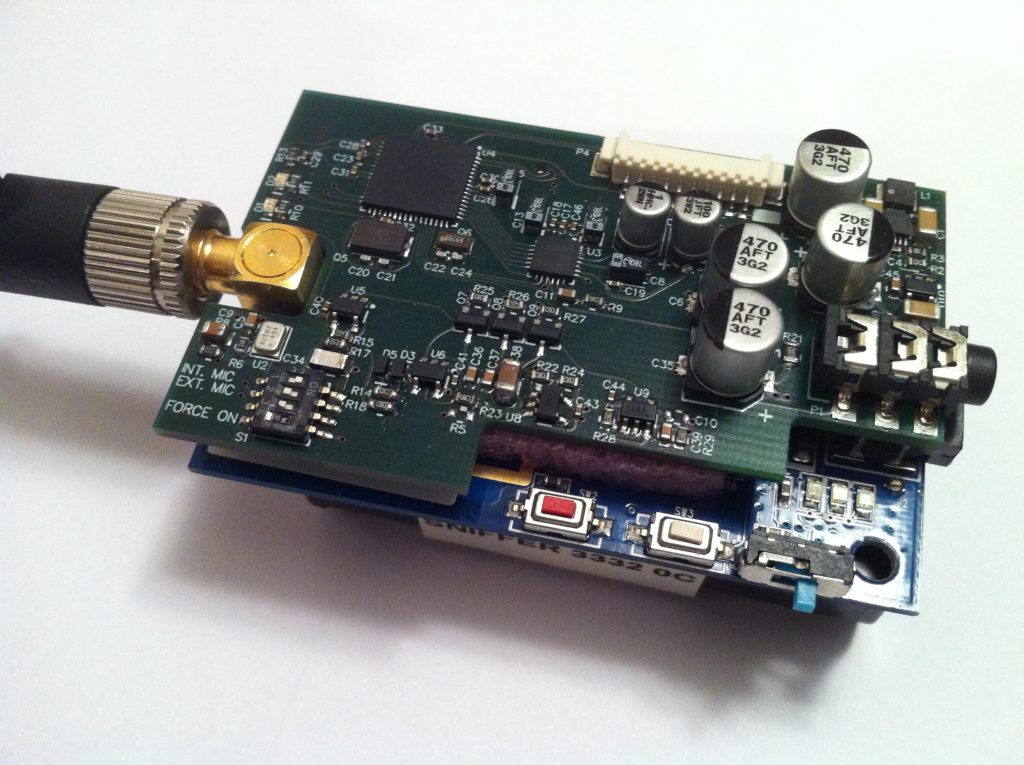
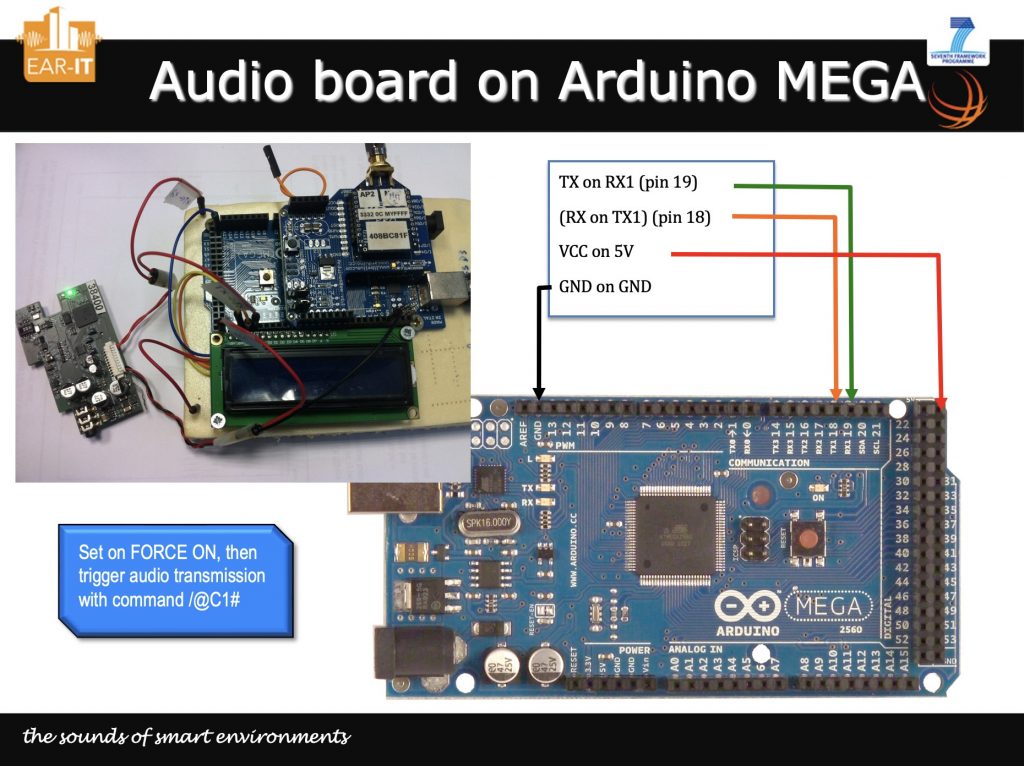

We conducted a lot of tests and benchmarks, with real experimentations on the SmartSantander network to qualify and determine the performance level of such multi-hop networks.
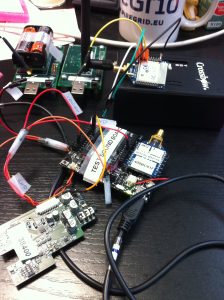



It was a great, great experience! At time of writing (Nov. 2nd, 2024), it was more than 10 years ago! We learned a lot and developed many embedded software to deploy and control all the devices for generating trafic, configuring relay nodes and analysing performances.
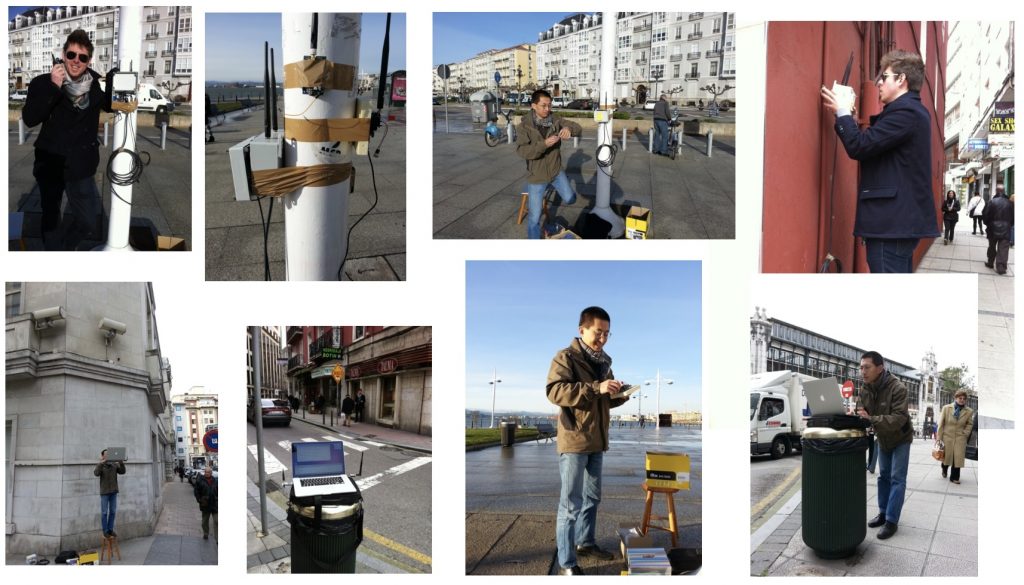
For those interested, you can look at these additional selected resources:
- EAR-IT final review. Minimum requirements for use of acoustic sensors (WP1.2) & Methodology and tools for the measurement and benchmarking on the use of acoustic sensors (WP1.3). Santander, November 24th, 2014.
- EAR-IT, acoustic sensing in smart environment: a case for audio streaming with low-resource IoT devices. Invited tutorial at Senzation’2014 (9th Summer School on IoT and Applications), Biograd na Moru, Croatia, 31/08/14 – 06/09/14.
- Capitalizing on Sound for a Smarter Future Internet / Audio streaming on IoT nodes. Invited talk at ASR/ResCom SmartCities seminar, December 18th, 2013.
- SmartSantander network qualification for acoustic surveillance and audio streaming. Talk at RESSACS 2013, Brest, France, June, 3rd, 2013.
- More talks and tutorials are available on my web page
